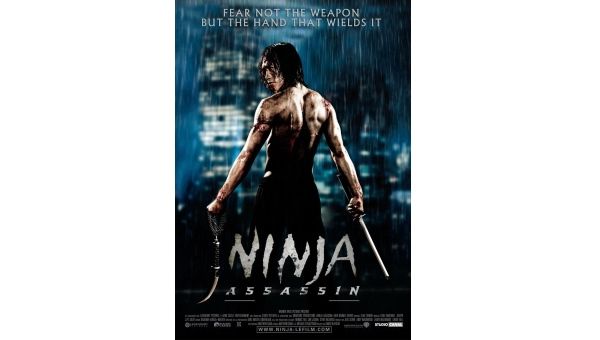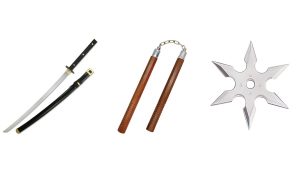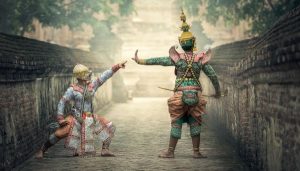
The movie “Ninja” is set in contemporary Japan and follows the heated feud between an orphaned westerner called Casey, portrayed by Scott Adkins, and his rival Masazuka, played by Tsuyoshi Ihara. The movie begins with a master of the Koga ninja clan finding the young Casey and inviting him to join his Dojo. The preferable treatment shown to Casey by the Sensei and the affections his daughter Namiko, played by Mika Hiji, makes Casey’s rival Masazuka simmer with jealousy. When Masazuka can no longer bare Casey’s presence, he lashes out during training. His violent outburst causes the Sensei to banish him from the dojo and he swears revenge. Fearing Masazuka will attempt to steal the Yoroi Bitsu; weaponry belonging to a famous ninja of the past and the dojo’s prized possession, the Sensei orders the collection transported to New York and asks Casey and Namiko to guard it.
Although it has a somewhat underdeveloped plot, the movie’s action scenes keep the viewer’s attention riveted to the screen. The movie’s martial art consultant Fumio Demura, a well-known karate and traditional weaponry master in Japan, worked closely with the movie director, Isaac Florentine, to create realistic fight sequences. Demura’s personal relationship to Seiko Fujita, headmaster of the Koga style of ninjutsu and considered by some to be the last true ninja, added an exciting aura of authenticity to the weapon fight choreography. The gravity defying kicks and technical execution of strikes and holds showcased by Adkins contributed significantly to the movie’s appeal. The action director Akihiro Noguchi also gave Adkin’s martial art techniques a more Japanese style by emphasizing hand-chops and joint-locks.
When Namiko and Casey leave for New York, the movie discards its adherence to a traditional ninjutsu and becomes a more modern hybrid of the concept. Masazuka, who has since his banishment become an assassin for hire, wears futuristic armor adorned with fancy, high-tech gadgets. Even Casey, when he dons the ninja garb of the great Yoroi Butsu treasure, finds himself clothed in a distinctly modern looking outfit. The movie reflects the evolution of the ninja in the collective consciousness of the public; moving from the realm of skilled martial artists to that of superheroes. The resulting clash between Casey and Masazuka, filled with dynamic unarmed and armed combat sequences, makes for a fitting, if predictable, ending to the movie.
The futuristic feel and Caucasian dominated casting of “Ninja” creates many parallels in other ninja movies directed by westerns. The emphasis, however, placed on the ninja origins in the Koga prefecture and the use traditional weaponry associated with ninjutsu does the movie credit. The director’s attention to recreating cultural details during the training scenes in the Koga Dojo, for instance, paid off admirably. By depicting disciples training ninjutsu weapon techniques, including the Shuriken, Kurisarigama, and staff, the film created a realistic rendering of a traditional Dojo setting. Altogether, the movie was entertaining and recommendable.




Free 2-Day Shipping!
all USA orders